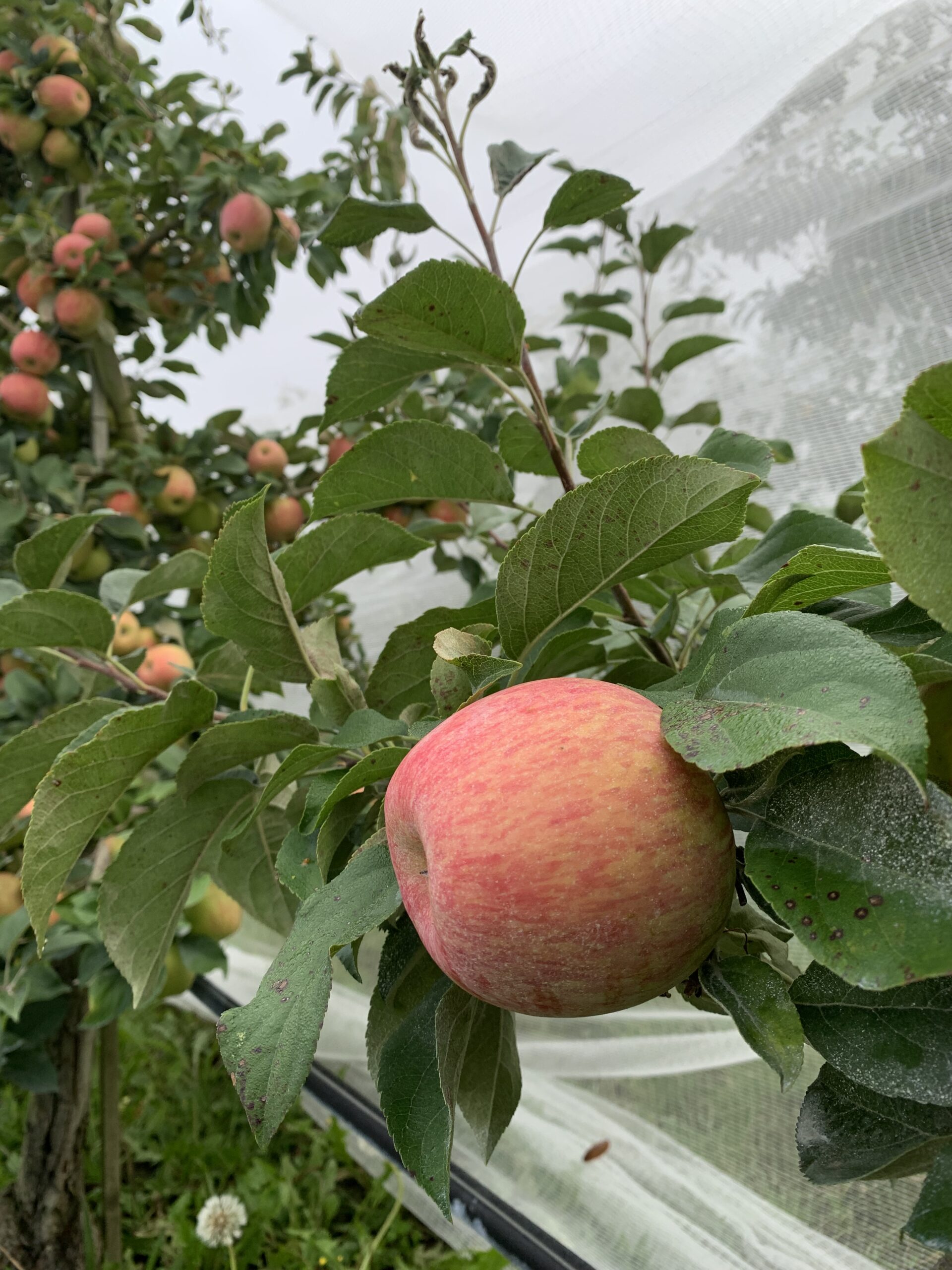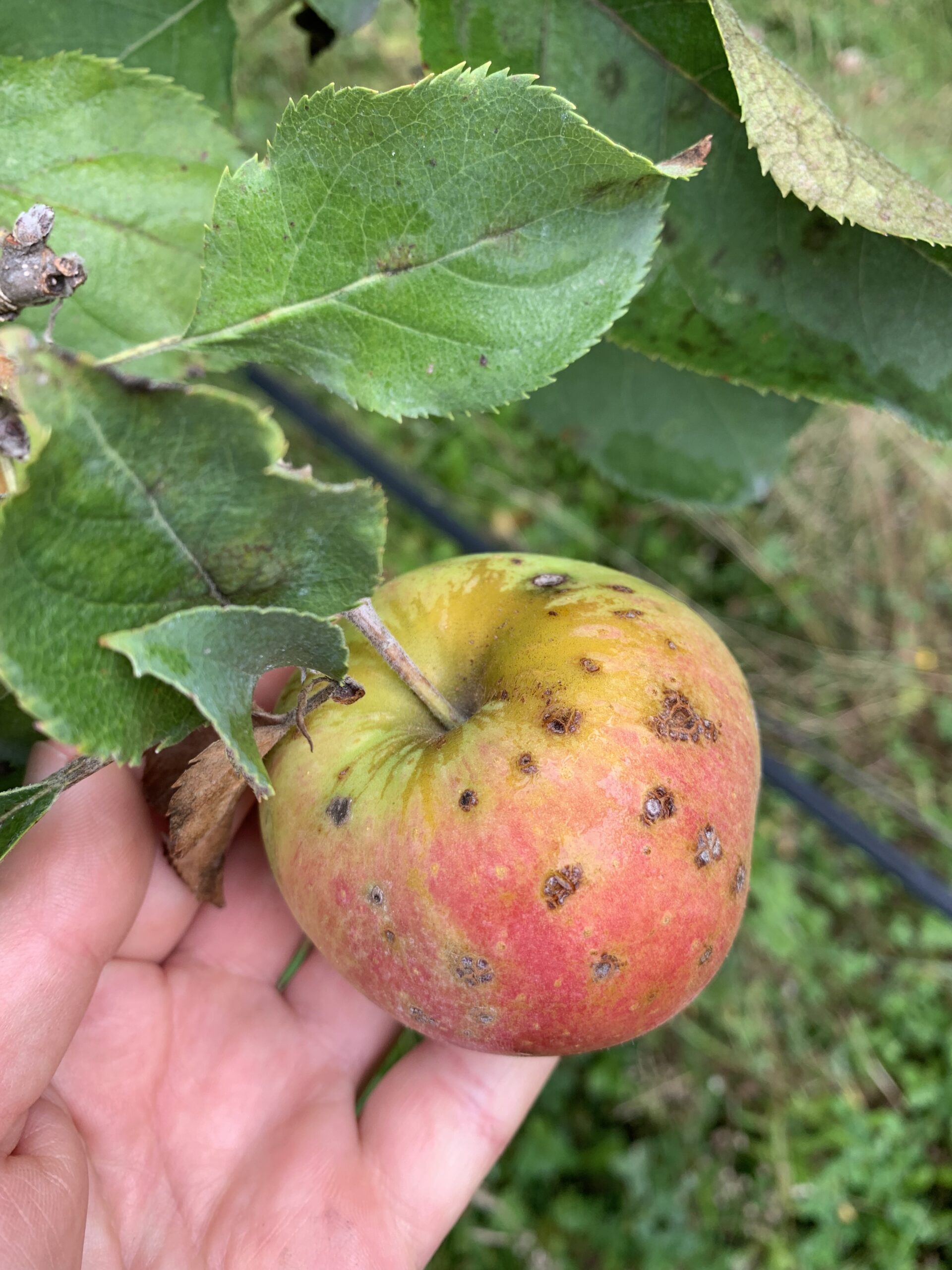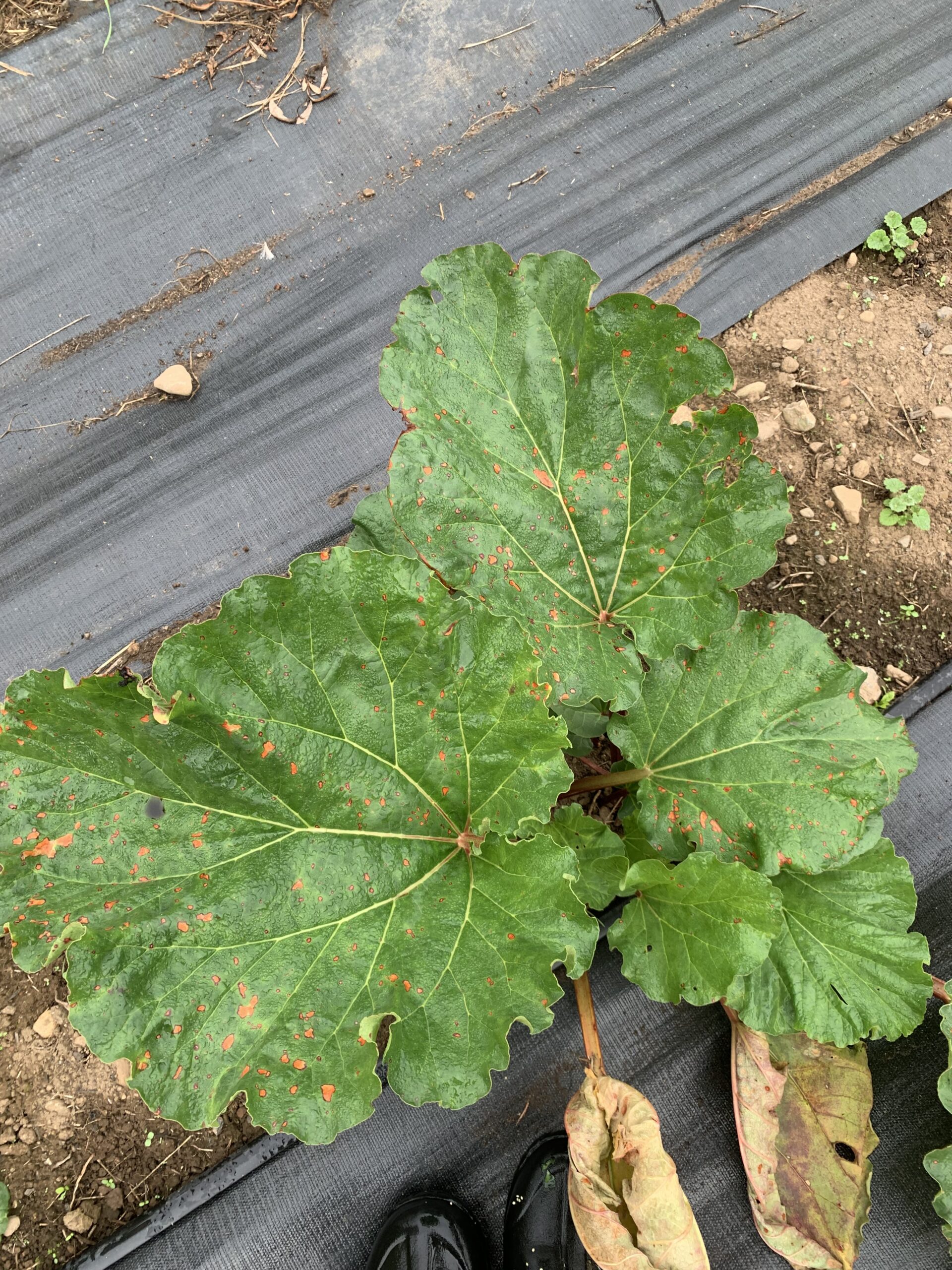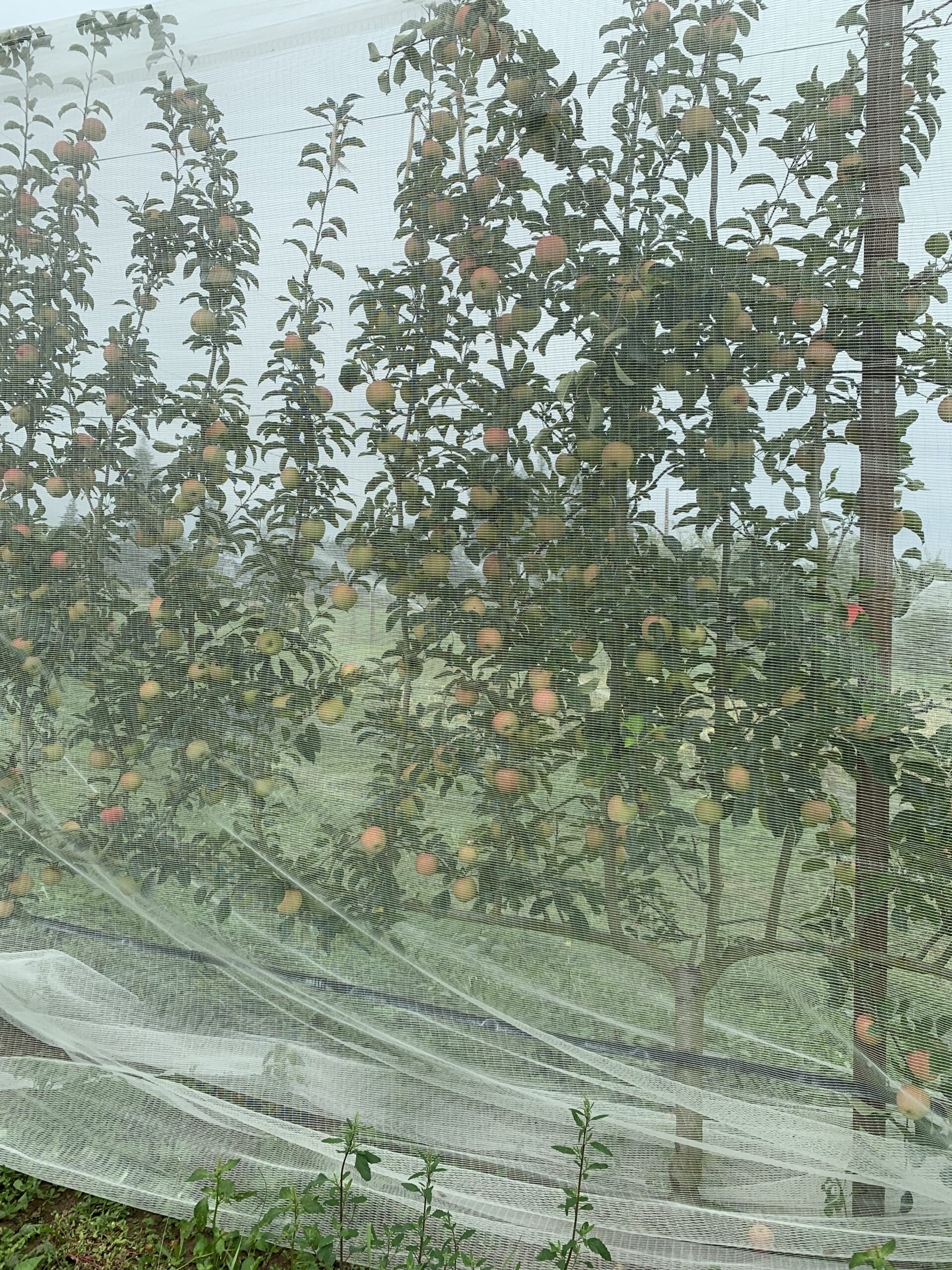
Honeycrisp apples ripening up (probably ~1 week to first harvest)
This week we’re all systems go on summer and fall fruit. With delays across the board in ripening fruit this year due to cooler temps, we’ve now reached a point where we have peaches overlapping with table grapes, pears, and apples all at once! We had a great harvest of Akane apples last week, and we’ll be washing and sorting those later this week – the pack-out looks to be decent on that variety. Orcas pears also look promising and have a really nice fruit set this year. Grapes, on the other hand, have been rough this year. Interlaken are small and russetted mostly, jupiter are low-yielding and clusters are thin, and other varieties are also showing signs of stress and poor fruit-set. Cane girdling helped in some cases for sure in terms of sizing berries, but other varieties have succumbed more to the cool weather, rain, and humidity.
Fruit/Bud/Tree Development
- Jupiter table grapes are testing at 20 brix on the ripest clusters, and Lynden blue at 16-17 brix.
- June-bearing strawberry plants are looking healthy and runners are finally filling in the beds. With continued weed management and deer protection we expect to increase our yield for next June tremendously.
Pest & Disease
- Continuing to see a few apple trees succumb to a combination of possibly crown rot and borers (we’re all but identified the culprits as the Ambrosia Beetle). We’ll be removing a few trees shortly from both the South Orchard (Zestar) and the cider trees in the North Apple block.
- Rhubarb leaf spot continues to affect some plants with this continued humidity – conditions favorable for fungal pressure. We will do another round of leaf removal to minimize innoculum.
- Apple scab pressure in our upper Jonagold block (an older block that we only harvest from for cider pressing) shows that apple scab has been present this year and that we’ve done a good job of prevention in our more lucrative dessert blocks. We at times use this older block as a control against which to measure the effectiveness of our IPM program for scab and maggot (although these trees are still a part of our IPM program, they are bushier and notoriously scab-prone).
What’s Ripe?
This week we’re harvesting: peaches (24-C), table grapes (interlaken, lynden blue, and the first jupiter), asian pears (mishirasu, kosui), euro pears (possibly orcas), plums (blue damson), cornelian cherries, and apples (roxbury russet, possibly red alkamene, possibly mott’s pink).

A scabby Jonagold from an older block shows our comparative effectiveness in control on other blocks on the farm.

Fungal leaf spot on rhubarb plant.

Great fruit set on Crimson Gold apples under nets for apple maggot prevention.

